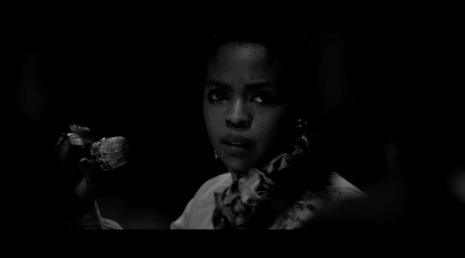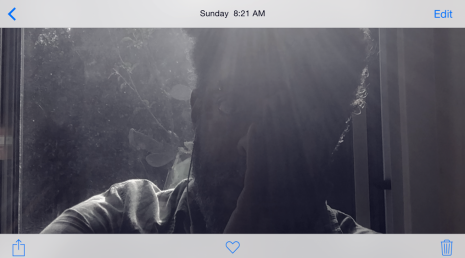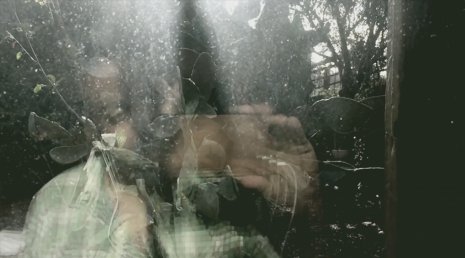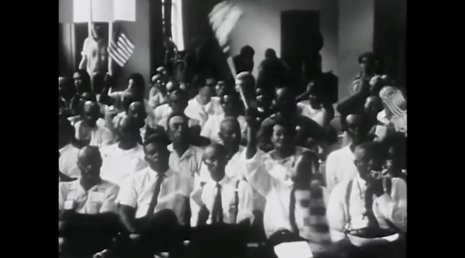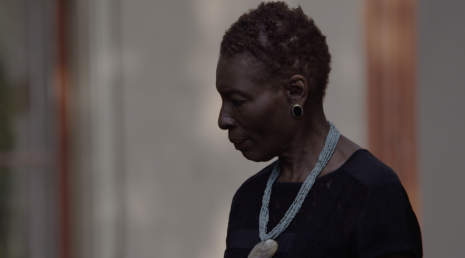Chapter One
While Arthur Jafa has been celebrated for some time as a cinematographer and an artist, in the last few years, (particularly after his 2016 film Love is the Message, the Message is Death received tremendous attention), interviews with him began proliferating in art and film publications around the globe. When we spoke with him about doing a new interview with Pablo de Ocampo, Jafa, who was, in winter-spring 2018, installing and finishing work for a number of far-and-wide solo shows, said he already felt – understandably - "overexposed." So we asked de Ocampo - a marvelous curator whose knowledge of and interests in radical forms of filmmaking resonate strongly with Jafa’s work - to consider compiling a selection of Jafa’s own words from existing interviews and texts to give a broad look at Jafa’s history and the way he thinks about cinema.
- Irene Borger, Director, Herb Alpert Award in the Arts
“I remember the movie starting and hardly anything after that. I used to say the film buried me alive. I lost consciousness in its presence. I remember they had an interval midway through the film, and when the lights came up, it was just me; the other two couples had abandoned it. There’s hardly any dialogue for the first 20 or 30 minutes of the film. It goes from these big epochal leaps in time and then it slows down to almost real time, or slower than real time. It’s doing a lot of amazing stuff that you don’t associate with commercial cinema. The film ends with the famous psychedelic sequence as Bowman’s pod is drawn through space. Then there’s all this surreal stuff where he’s in the bedroom. I couldn’t make head or tail of it. I was completely flabbergasted in the face of it. I remember walking out of the theatre, and this is how I know this was a profound moment for me, because I remember it haptically, I remember it spatially. I remember the dimensions of the space, I remember the angle at which the light was coming in to the theatre, because it’s about two or three o’clock at this point. I remember the lint in the air, floating around in the light. I was looking around like this and I only saw one person, the manager of the theatre. He was sitting over in the booth reading a newspaper. Older White guy. He seemed old at the time, because I was twelve. I walked over to him. At that point in my life I didn’t really have unchaperoned interaction with White people. It was very, very rare. But I walked over to him and said, ‘Excuse me, sir. I just came out of that movie, and … Can you tell me what it was about?’ He stops reading his paper, looks down at me and says, ‘Son, I’ve been looking at it all week and I have no clue.’ That’s the last thing I remember. I don’t remember how I got home. I don’t remember anything after him saying that….
[2001] was a profound influence. To a certain degree, I think I’m always trying to figure out how to replicate the intensity of that experience. I think some of it is bound up with the fact that I was younger, where there’s a lot of gaps and things you just don’t understand. A lot of things for me are bound up in that moment. Mississippi is a very interesting and spooky place to grow up in, particularly the Delta. I was born in Tupelo, which is Northeast Mississippi. That’s the hill country. The Delta, which I moved to when I was seven, is very flat. It’s a very transient environment. I think, in some ways, the landscape itself predisposed me to be attracted to this kind of thing.”
—from “Arthur Jafa in conversation with Hans Ulrich Obrist,” 2016, Serpentine Galleries
“There’s of course an inescapably troubling, particularly for a young black kid in the early seventies, racial dimension of the film. First, there is the absolute whiteness of the context (both figuratively and literally). All of the characters are Caucasian and they are, in their demeanor, both archetypically and atavistically white. This is a whiteness that’s sterile, creepy and ultimately seductive. (I’d guess Kubrick’s background, a Bronx Jew, is relevant here). The interiors they occupy seem devoid of any artifacts that might be read as anything other than the products of an extremely Eurocentric worldview. And second, there is the absence of both black people and/or any apparent signs of blackness. This absence is misleading. Ultimately, I came to recognize the film’s highly repressed and anxiety ridden preoccupation with blackness. And given the times, how could it have been otherwise?”
—from My Black Death by Arthur Jafa, Publication Studio, 2015
“One of the things I’ve been continually obsessed with is the movie Alien (1979). To me it’s no accident that when the alien first pops out of the guy’s chest, all the White folks pull back. But Yaphet Kotto grabs a fork, and he’s gonna go in on the alien! He’s the only one who’s pushing forward, right? He’s the one saying, “I recognize, I know what the fuck this is. Let’s kill it and let’s kill it now!” He recognizes the danger immediately.
In a sense, he’s seeing himself. He knows what the danger is. Everybody else is like, “gasp,” but he wants to take this thing out. And the alien even has fronts, you know? It’s like some total hip-hop shit. And I am obsessed that they got this seven-foot-two Sudanese brother, Bolaji Badejo, to play the alien. Black people can’t even get work in movies when they want to. So they go to London and find a seven-foot-two Sudanese guy? This is not an accident. You can’t tell me it’s arbitrary. Somebody, unconsciously or otherwise, searched him out because on some fundamental psychoanalytic level, they knew the alien was a nigga, excuse my language. For real, they straight-up knew this on some profound level.”
“I make work that addresses black people. Some people find that statement troubling: they think I’m saying I don’t make work for white people, but it’s not the same thing. I’m speaking to black people and everybody else gets to listen in. By and large, our society is dominated by the positions and opinions of white people. If you go to see a movie, for instance, almost invariably it comes from the perspective of a white male subject. So, all the non-men and non-white folks who have to listen to this shit have developed an empathetic muscle which they use to project themselves into someone else’s subject position, to try and feel some of what they feel and perhaps understand how their world is structured. That muscle is profoundly underdeveloped in white men, so speaking to them specifically is not necessarily productive. It’s a position I share with Kerry James Marshall: a rejection of the implication that black-specific work cannot be universal. Culturally speaking, it’s a fundamental counter-assumption that a figure can be black and still represent all of humankind, or all men or all women.”
—from “As Brilliant as the Sun”, interview with Jayce Clayton, Frieze Magazine, February 22, 2018
“I have a very simple mantra and it’s this: I want to make black cinema with the power, beauty, and alienation of black music.”


